The first time I saw a persimmon, I thought it was a tomato that I was expected to eat raw and whole. It’s not, of course – it’s much better.
Or at least it’s much better for those of us who don’t like eating tomatoes out of hand like apples, and who do love the sweet tang of this unique fruit.
Asian persimmons (Diospyros kaki) are best suited to growing in USDA Hardiness Zones 7-11, while American persimmons (D. virginiana) are hardy to Zone 5.
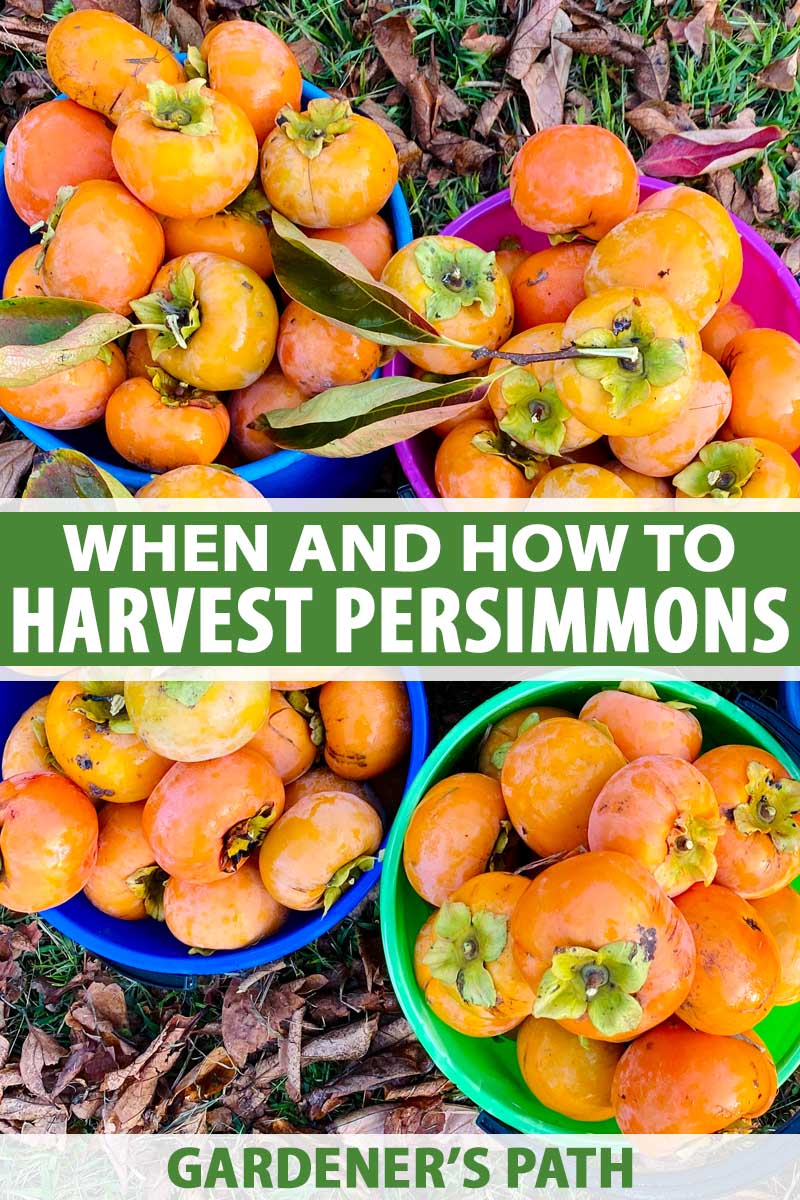
We link to vendors to help you find relevant products. If you buy from one of our links, we may earn a commission.
If you’re growing these delicious fruits, whose botanical genus name Diospyros translates to something like “food of the gods,” how do you know when they’re ripe and ready for picking?
In this guide, we’ll tell all.
Here’s what we’ll cover:
What You’ll Learn
A Quick Persimmon Primer
Determining when you should harvest these tasty fruits depends not on which specific variety you’re growing, but on whether or not it’s astringent.
An astringent persimmon contains mouth-puckering tannins when it’s unripe, making it just about inedible – or at least that’s the case until it’s so ripe that it’s about to fall off the tree.
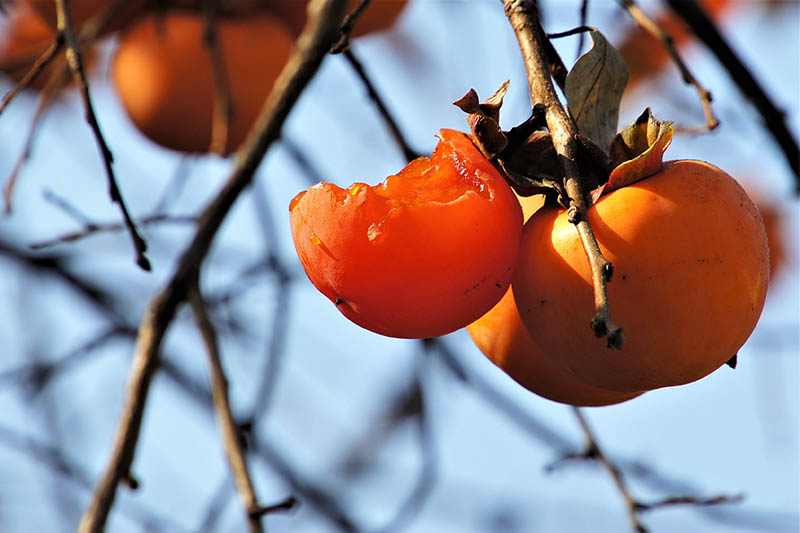
These fruits are the most richly flavored, with hints of pumpkin, maple, and spice. If you ask me, a soft, squishy, super ripe persimmon is pretty much the epitome of fall coziness.
Non-astringent varieties have far fewer tannins and lose them a lot more quickly, so you can pick them as soon as they turn that unique orange-pink color. Or you can wait until they’re softer, if you want to.
Since they don’t have as many tannins, they’re milder in flavor than their astringent sisters. But you can eat them while they’re still crispy and crunchy, which means they’re perfect for use in salads.

D. virginiana grows wild throughout the eastern half of the United States, from the Gulf states up into Pennsylvania and Illinois.
Whether you have a wild D. virginiana tree in your backyard, or if you planted one there yourself from a nursery, the American variety is astringent. You can read our full growing guide here.
In the D. kaki species, two varieties are grown widely in the United States:
- ‘Fuyu,’ which is non-astringent
- ‘Hachiya,’ an astringent fruit
But these aren’t the only cultivars available. You can read about more of our favorite types in this roundup of persimmon varieties, and don’t forget to check out our guide to growing Asian persimmons as well.
The single most important thing to note when you’re preparing to harvest your fruit is whether or not it’s astringent or non-astringent.
The last thing you want to do is think you’re growing (or assume you’ve picked) a non-astringent variety, take a huge bite, and dash the overbearingly acrid astringent fruit to the ground in surprise.
The Best Time to Harvest
As you might have guessed, there are two main harvest times for these fruits, and determining when yours is likely to be depends on which type you’re growing.
Non-Astringent Fruits
Since they don’t have to ripen to a stage of utter softness on the tree, non-astringent persimmons can be harvested as soon as they turn from green to orange-pink or red.
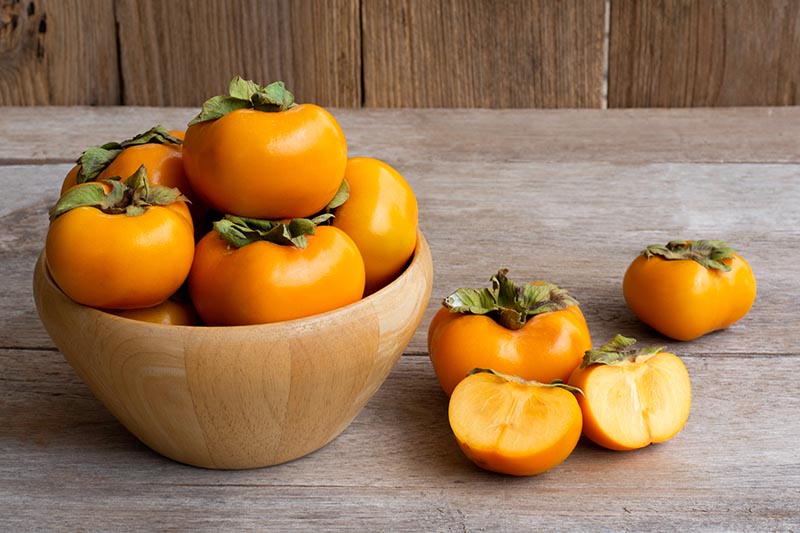
This usually happens sometime in September or October.
Whether you leave them on the tree or pick them, they’ll ripen and become more soft with time. If you like them crunchy or firm, be sure to pick them and eat them up quick!
Astringent Fruits
Astringent persimmons often aren’t ready until somewhere between October and January.
As with non-astringent types, you can harvest them before they are fully ripe, and ripen them off the tree.

Astringent types are ready to harvest when they have changed to the expected mature color of the cultivar you are growing. If they are still unripe, you will need to ripen them before eating.
The easiest way to determine ripeness is to make sure the color has changed from green to pinkish-red, and the fruit should be so soft that it nearly bursts when you touch it gently with your finger.
The skin will often look wrinkly, kind of like an overripe tomato.
How to Pick
No matter which type of persimmon you’re growing, you harvest them the same way. Get out a pair of clean gardening scissors or pruning shears, and cut the stem of the fruit above the calyx.
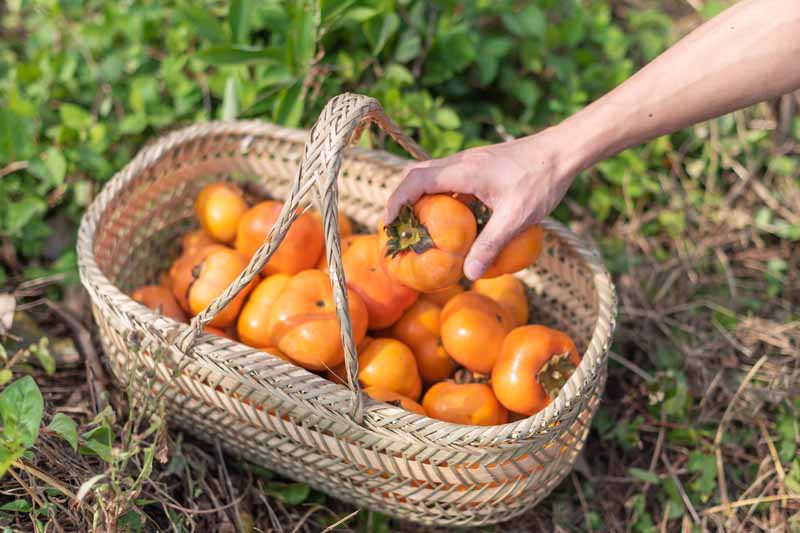
Leave the calyx intact until you eat or process the fruit, to prevent it from rotting before you can enjoy it.
For firm persimmons, you can pile the fruits up in a basket or bucket and then bring them inside. With soft, ripe fruits, however, you’ll want to arrange them in a single layer in a shallow tray so they don’t get squished or bruised.
How Do You Eat a Fresh Persimmon?
Unless you grew up eating these tasty fruits, you might need a little help figuring out exactly how to eat the soft ones.
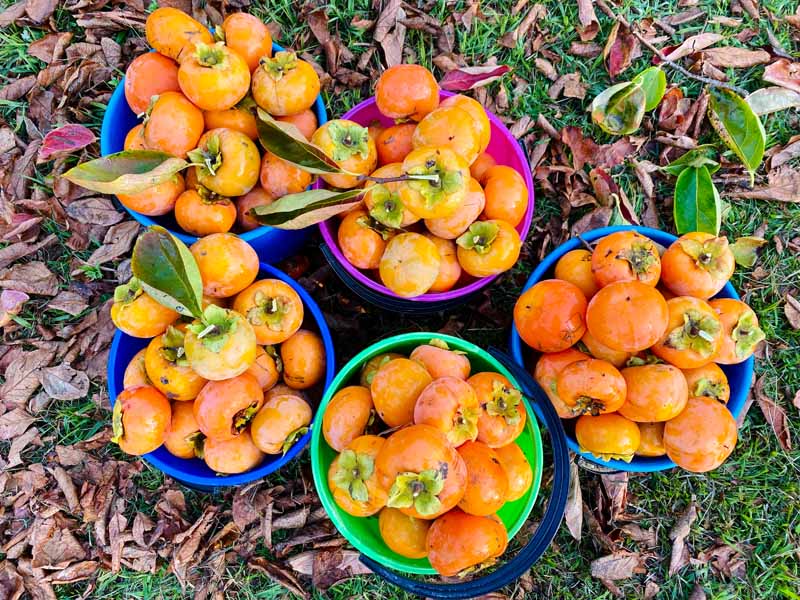
The firm ones are easy: you can just eat them like you’d eat an apple, skin and all, avoiding the core and any seeds you find. These can also be cut up to add to salads and baked goods.
But what about the squishy, jelly-like, oozing ripe ones?
All you have to do is cut them in half, get a spoon, and scoop the squishy flesh out of the skin and onto your waiting tongue.
You can also cut it into pieces, skin and all, and eat it with a spoon. Or try it on top of ice cream or yogurt, mixed into your favorite desserts or oatmeal, or added to a smoothie.
Storage and Preservation Tips
If you pick your fruits ripe from the tree, plan to devour them within two days after picking if you keep them on the countertop, or within five days if you refrigerate them.
If you prefer to pick them when they’re not quite ripe, or if you’re dealing with firm fruits, you can store them in a brown paper bag in the refrigerator for up to one month. This way, they’ll ripen slowly.
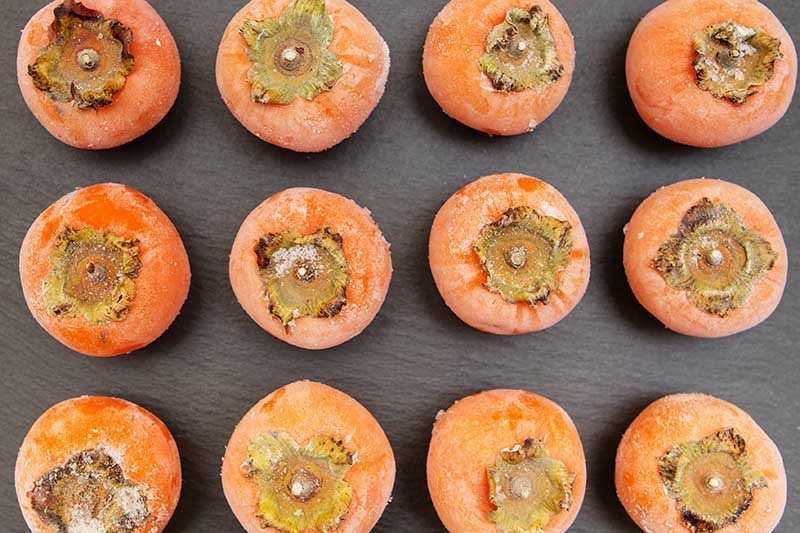
You can even freeze non-astringent persimmons whole and then use them in smoothies, baked goods, and other recipes later on. Whole frozen fruits may be stored in the freezer for up to six months.
For soft, squishy fruits, if you puree it in your blender, the pulp may be frozen for up to one year. You can use the puree in smoothies and baked goods all year long!
Puree can also be used to make jam or beer. And firm, non-astringent fruit can be air-dried, or dried in the oven.
Recipes and Cooking Ideas
Crisp D. kaki or D. virginiana fruit can be substituted for apples in just about any dish.
So why not try subbing sweet slices in this recipe for a French apple tart with a maple syrup glaze from our sister site, Foodal?
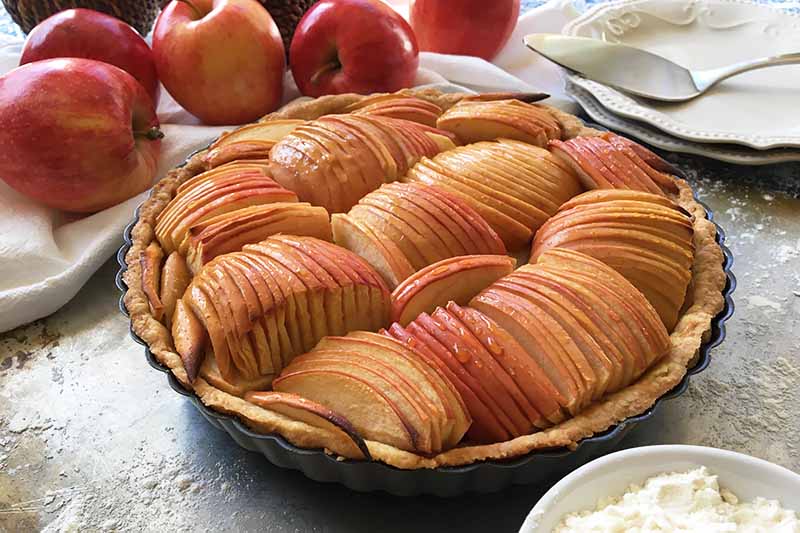
Or, try subbing them for apples in this recipe for autumn apple and radicchio salad, also from Foodal.
Can you imagine a tastier seasonal salad? I can’t.
As for the squishy fruits, try making them into a tasty pudding, or whizzing them into a smoothie.
Even better, use persimmon puree instead of pumpkin puree in my favorite recipe for pumpkin bread, also on Foodal.
The options are endless for this surprisingly versatile fruit!
Perfect Persimmons
Whether you love them soft and jelly-like or crisp like an apple, there’s nothing quite like a fresh persimmon grown and harvested from your own backyard orchard.
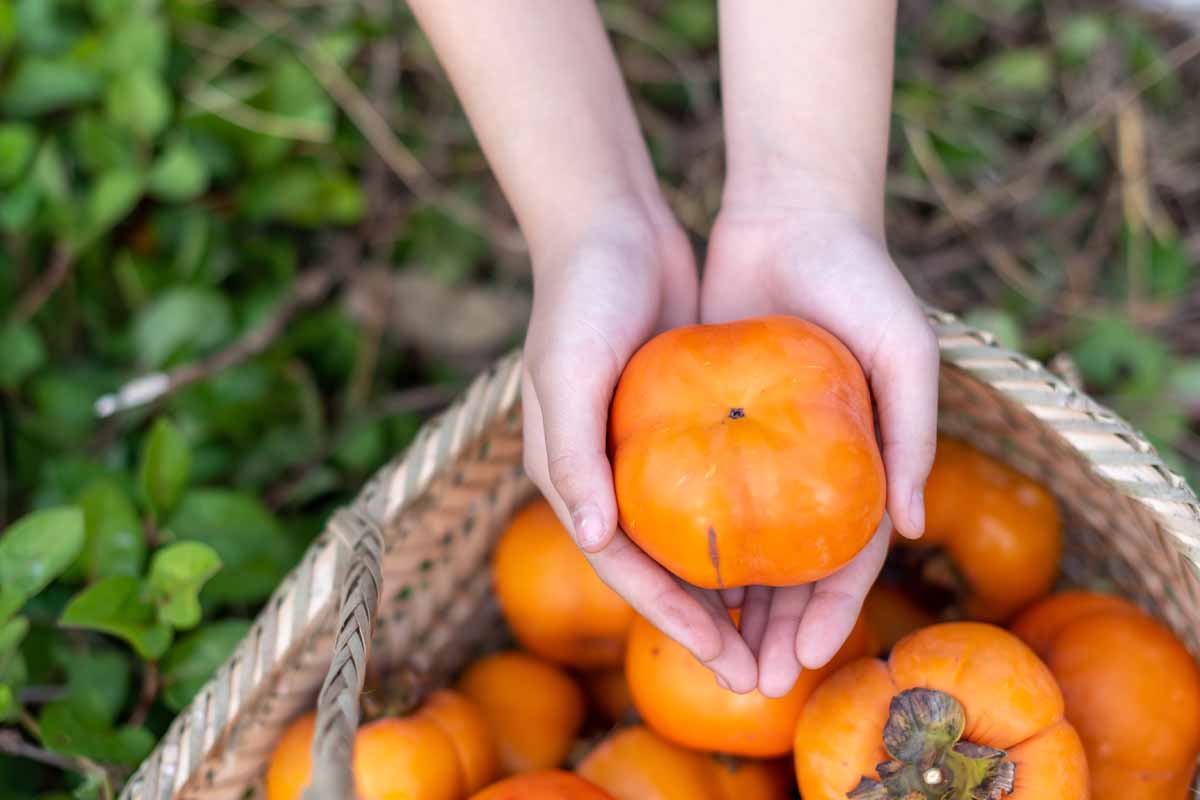
So tell me: what’s your favorite way to eat D. kaki or D. virginiana fruit? Let me know in the comments below, and drop any questions you have, too!
And if you are interested in growing your own fruit trees, check out these articles for more inspiration next:
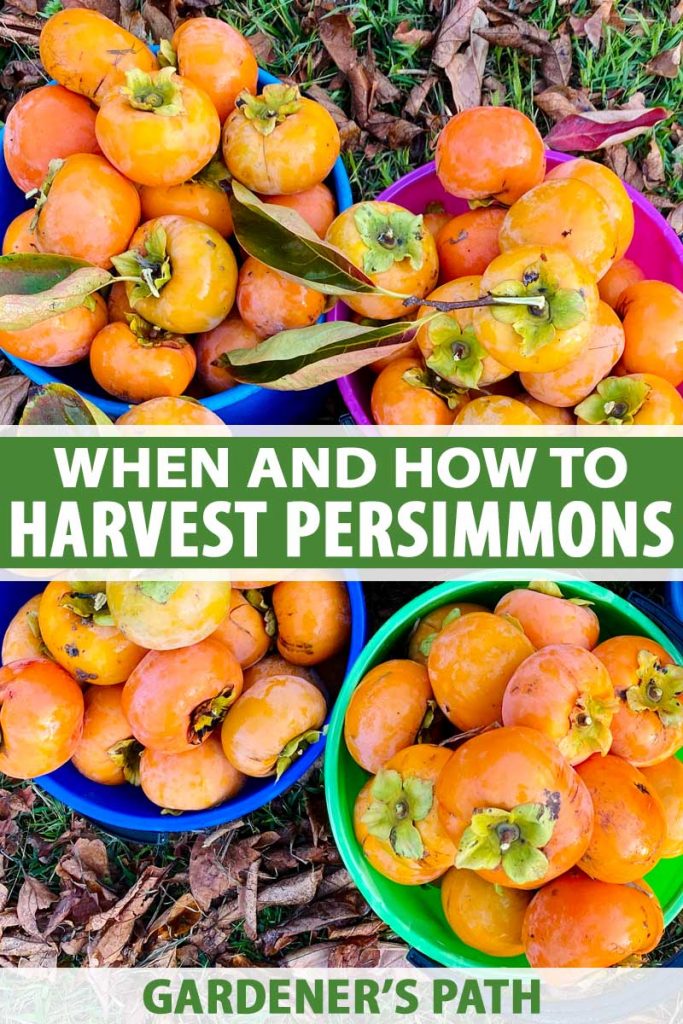
I had wondered if I could harvest wild permissions before they were ripe and I got the answer I was looking for. Thank you for the informative article.
Thank you for reading, Sean!
Great article. Thank you for the advice. Unfortunately, I moved into my house about 2 years ago, and I have no idea what kind of mature tree I have. This is the first year that the squirrels and birds didn’t make off with all the fruit while green – there are 8 fruit left within reach. Can you tell me which one I have based on this admittedly bad photo? They’re still hard as rocks in late October, rather squat, and have no pink hue to them. I’m in the south SF bay area. I have no idea when it… Read more »
Hi Shane!
I’m glad the article was helpful. This does look like a persimmon — are you inquiring about what cultivar it is, or whether it is a persimmon at all?
Let me know and I’ll see what I can do — thank you!
Hi Shane, Lucky you for moving to a home with a persimmon tree! You have a Fuju persimmon – the best and most popular kind! They are wonderful to eat (like an apple). I like them sliced and tossed in a green salad for a bit of color and crunch. They are wonderful dried. Just slice them thin with a mandoline and dry in a dehydrator or a very low oven. The thinner they’re sliced and the longer they’re dried, the crispier they become. I’m in the north SF bay area (Napa) and my neighbor has both kinds … the… Read more »
Great tips, Sharon!
I used wild persimmons from a tree in nearby woods. All fruit was very ripe so I didn’t use any of the anti-astringency methods mentioned on various websites. After extracting caps, seeds and skin, I used a recipe for persimmon jam and cooked for ten hours in crockpot. The fruit became very astringent after cooking. One article mentioned small amount of baking soda, but this did not totally fix it. Is there anything I can add at this point to counter this astringency? Help!!!
Did you give them a taste before you started cooking? Some types of persimmons remain astringent even when they’re ripe. These fruits contain tannins, and increasing the acidity of your jam may help. Rather than baking soda, I’d try something with a better flavor like lemon juice. Or, you could try going in a more savory direction with balsamic vinegar.
Can you leave the astringent persimmons on the tree during a frost and will they ripen up after you pick them? Thank you for the information.
Some gardeners actually recommend waiting to pick persimmons until just after the first frost – as long as the local wild animals don’t get to them first! These fruits will continue to ripen after picking as well.
how cold is ok before I pick the persimmons? Is 33 ok still?
Yes, that’s fine! Many growers will tell you it’s actually better to wait until after the first frost, as I mentioned in my response to Jane above. And some will even let them stay on the tree into the winter, or put them in the freezer after picking! Keep in mind that freezing temperatures will of course affect the texture of the fruit – but in the case of persimmons, this can have its advantages.
Bought Persimmon Tree at local nursery a decade ago or so. Every year it is one of the last trees to show any growth or get leaves then when winter comes all the new growth dies off only to repeat process next year. The shoots get maybe two feet tall before winter. I am thinking that only the root stock remains and that it is some type of Persimmon tree which will not tolerate the cold. I am in Zone 3-4 in northern lower Michigan. Any suggestions other than dig it out and plant something else? Perhaps attempting to graft… Read more »
Sorry to hear it, Brian. Do you know what type of persimmon you’re growing? Most American persimmons do best in Zones 5-9, while Asian varieties typically prefer regions that are even warmer. So it may very well be that yours simply cannot tolerate the cold where you live. I don’t think grafting onto existing rootstock that isn’t sufficiently hardy will help unfortunately. Otherwise I’d consider the conditions where it’s planted- sun and wind exposure, soil composition and pH, drainage, etc. Those combination grafted trees sure are interesting! Unfortunately they don’t always tend to be long-lived. Glad to hear you’re still… Read more »